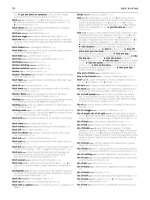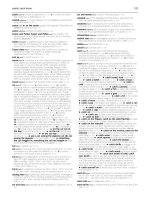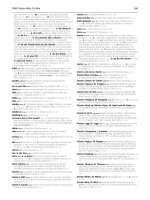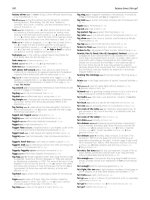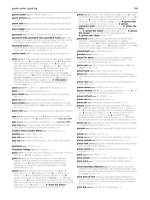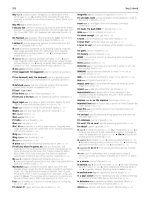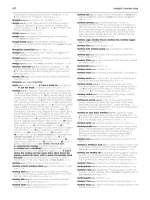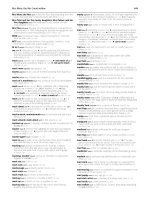Correct english part 21 potx
Bạn đang xem bản rút gọn của tài liệu. Xem và tải ngay bản đầy đủ của tài liệu tại đây (79.64 KB, 3 trang )
Appendix C
Planning, Drafting and Proofreading
PLANNING
Whenever you have an important essay, letter, report or article to
write, it’s well worth taking time to work out in advance exactly
what you want to say. Consider also the response you hope to get
from those who read the finished document and decide on the tone
and style which would be most appropriate.
" Next, jot down, as they come into your head, all the points
that you want to include. Don’t try to sort them into any
order. Brainstorm. (It’s better to have too much material at
this stage than too little.)
" Then, read through these jottings critically, rejecting any that
no longer seem relevant or helpful.
" Group related points together. These will form the basis of
future paragraphs.
" Sequence these groups of points into a logical and persuasive
order.
" Decide on an effective introduction and conclusion.
DRAFTING
Now you are ready to write the first draft.
" Concentrate on conveying clearly all that you want to say,
guided by the structure of your plan.
" Choose your words with care. Aim at the right level of
formality or informality.
" Put to one side any doubts about spelling, punctuation,
grammar or usage. These can be checked later. (If you wish,
you can pencil queries in the margin, or key in a run of
question marks – ?????.)
" When you have finished this first draft, read it critically,
concentrating initially on content. (It can help to read aloud.)
Have you included everything? Is your meaning always clear?
Should some points be expanded? Should some be omitted?
Have you repeated yourself unnecessarily?
193
TEAMFLY
Team-Fly
®
" Read the amended text again, this time checking that you
have maintained the appropriate tone. Make any adjustments
that may be needed.
" Examine the paragraphing. Does each paragraph deal
adequately with each topic? Should any paragraphs be
expanded? Should any be divided? Should the order be
changed? Does each paragraph link easily with the next? Are
you happy with the opening and closing paragraphs?
(Sometimes they work better when they are reversed.) Should
any paragraphs be jettisoned?
" Are you happy with the layout and the presentation?
" If you have made a lot of alterations, you may wish to make
a neat copy at this stage. Read through again, critically,
making any adjustments that you feel necessary. You may find
third and fourth drafts are needed if you are working on a
really important document. Don’t begrudge the time and
effort. Much may depend on the outcome.
PROOFREADING
When you are happy with the content, style and tone, you are ready
to proofread. Proofreading means scrutinising the text for spelling,
punctuation, grammar, usage and typographical errors.
" Make yourself read very slowly. Best of all, read aloud. Read
sentence by sentence, paragraph by paragraph. Read what is
actually there, not what you meant to write.
" Check anything that seems doubtful. Check all the queries you
tentatively raised earlier. Don’t skimp this vital penultimate
stage. Don’t rely wholly on a computer spellcheck; it will
take you only so far (and, in some cases, introduce errors of
its own).
" If you know you have a particular weakness (spelling,
perhaps, or not marking sentence boundaries – commas are
not substitutes for full stops!), then devote one read-through
exclusively to this special area.
" When you are satisfied that you have made this important
document as good as you possibly can, you are ready to make
the final neat version. If, in the process, you make any small
errors, don’t simply cross them out and don’t use correction
fluid. Rewrite. When the last word is written, you can be
194
APPENDIX C PLANNING, DRAFTING AND PROOFREADING
satisfied that you have done your very best. Good luck!
Note: If you have a form to fill in, it is well worth making a few
photocopies before you start. Practise what you want to say on the
photocopies. Fit what you want to say carefully in the space
available. Then complete the original form. It’s well worth the extra
time taken.
APPENDIX C PLANNING, DRAFTING AND PROOFREADING
195

